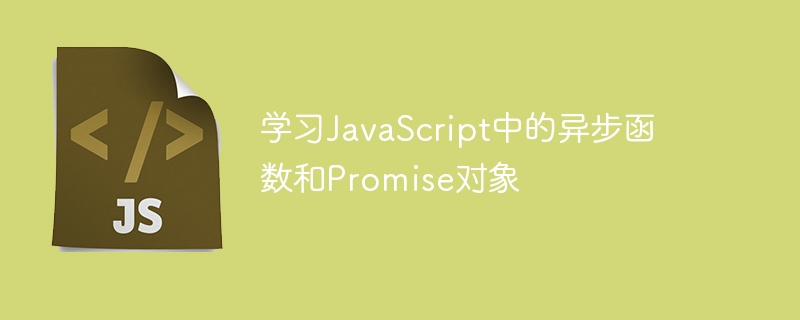

To learn asynchronous functions and Promise objects in JavaScript, specific code examples are required
Introduction:
In JavaScript development, asynchronous programming is an essential part . Asynchronous functions and Promise objects are commonly used asynchronous programming methods. This article will introduce asynchronous functions and Promise objects in JavaScript in detail and provide specific code examples.
1. Asynchronous function
1.1 What is an asynchronous function
In JavaScript, synchronous functions are executed in sequence, and each function needs to wait for the execution result of the previous function before it can continue execution. Asynchronous functions do not need to wait for the previous function to complete execution, and can execute multiple functions at the same time.
1.2 Characteristics of asynchronous functions
1.3 Example of asynchronous function
The following is a sample code that uses an asynchronous function to handle network requests:
function fetchData(url, callback) {
setTimeout(function() {
const data = 'Hello, World!';
callback(data);
}, 2000); // 模拟网络请求延迟2秒
}
console.log('Start');
fetchData('https://example.com', function(response) {
console.log(response);
});
console.log('End');Run the above code, the output result is as follows:
Start End Hello, World!
As you can see, the execution of the program will not wait for the network request to be completed, but will continue to execute subsequent code. When the network request is completed, the result is passed to the program through the callback function.
2. Promise object
2.1 What is a Promise object
The Promise object is a new feature in JavaScript that handles asynchronous operations. It can solve the callback hell problem and make the code more readable and maintainable.
2.2 Characteristics of Promise objects
2.3 Example of Promise object
The following is a sample code that uses a Promise object to handle network requests:
function fetchData(url) {
return new Promise((resolve, reject) => {
setTimeout(function() {
const data = 'Hello, World!';
resolve(data);
}, 2000); // 模拟网络请求延迟2秒
});
}
console.log('Start');
fetchData('https://example.com')
.then(response => {
console.log(response);
})
.catch(error => {
console.error(error);
});
console.log('End');Run the above code, the output result is as follows:
Start End Hello, World!
As you can see, the execution of the program will not wait for the Promise object to complete, but will continue to execute subsequent code. When the Promise object is completed, the corresponding callback function is executed according to its status.
Conclusion:
Learning asynchronous functions and Promise objects in JavaScript is the key to mastering JavaScript asynchronous programming. Through asynchronous functions and Promise objects, time-consuming operations can be better handled, the code execution efficiency can be improved, and the code can be made more readable and maintainable. I hope that the introduction and sample code of this article can help readers better understand and apply asynchronous functions and Promise objects.
The above is the detailed content of Learn asynchronous functions and Promise objects in JavaScript. For more information, please follow other related articles on the PHP Chinese website!
